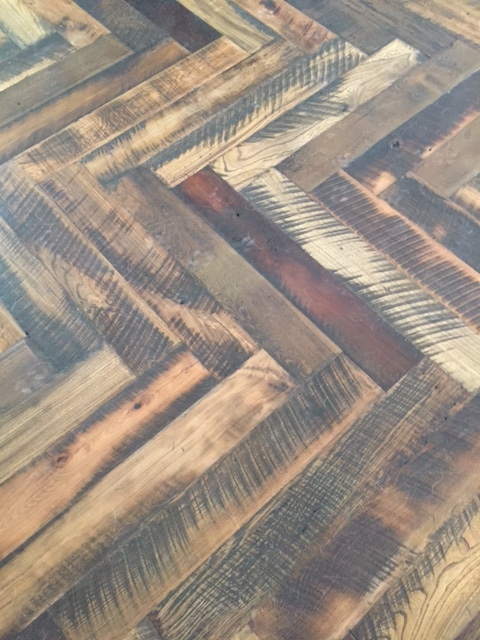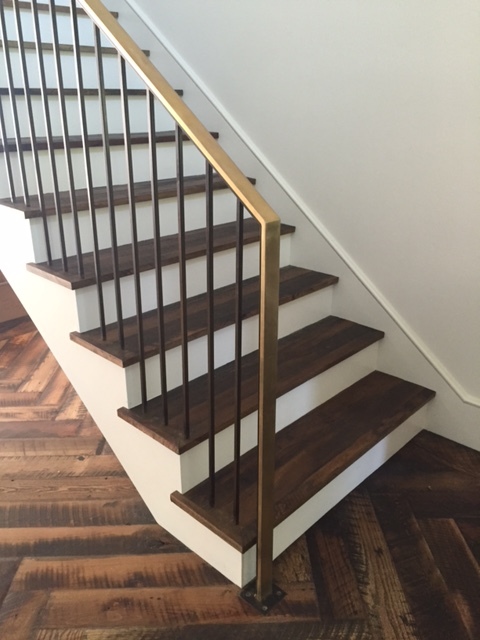Remodel with confidence in 2018! (Photo courtesy of Getty Images)
At a recent peer gathering I threw out the question “what are some lessons learned and project stories you can share”, and the answers were wild! They included strange pet mishaps, a veggie stocked fridge that stunk up a remodel, and a glass chandelier that almost came crashing down during a simple furniture install. In 14 years of being a designer I've had my fair share of "learning experiences" as well. I’m all about learning from my mistakes, but what better than to learn from OTHER people’s mistakes? Now take this knowledge and tackle your next remodel with confidence. You're welcome blog followers!
The list is based on stories from clients, peers, and a few first-hand situations. Here goes:
1) Check all dimensions closely when ordering anything, but especially furniture. That includes wall dimensions, ceiling heights, even door widths! I have a designer friend who once ordered sofas for a commercial space and they were too big to get through the doors! She now has some fabulous large sofas in her living room...
2) Read the fine print when placing orders, and document decisions clearly. An associate of mine once selected a sectional fabric, and gave the swatch to the vendor without writing the item number down. When it arrived weeks later, it was the wrong color. She had approved the order trusting that the vendor had documented it properly. It was an expensive assumption!
3) Always do a large paint sample before painting the entire area. Review it in the exact environment where it will be, and document your choices clearly. The first time I ever cried on a job site was when I arrived to see a sample of my sassy green accent paint, only to discover it was almost neon and they had painted it on EVERY WALL!
4) Inspect materials before they get installed. For example – open boxes of tile to make sure what is in the box is what you expected. Natural materials in particular (travertine, marble, etc.) can vary greatly from the sample.
5) On that same note, evaluate multiple samples of natural materials. For example, when ordering tile, make sure you examine at least 4 or 5 different tiles, and try to see a picture of the material installed. I had a client who carried one piece of travertine to every showroom for months. She compared everything to it, only to discover it represented only the very lightest of the color range. Variation is to be expected – be prepared to embrace it.
6) Review large swatches of all fabrics, finishes, and rugs before placing orders. A client told me of a time (she was working with a previous designer - thank goodness) when she had ordered fabric for drapes from a small swatch, only to realize after the drapes were installed that there were little monkeys on the print! Yes, that’s right - MONKEYS!
7) Make sure you see plumbing & light fixtures in person before ordering. I’ve seen sneaky details show up in person that were not visible in online pictures.
8) Inspect items when they are received and don’t sign off without noting even the smallest issues. If an item is delivered to you with a defect, you’ll have very little recourse if you don’t note it upon receipt.
9) Scale is important in general, but especially with regards to lighting. This includes everything from bedside lamps to sconces and chandeliers. If in question, create mock ups of the size with boxes or cardboard to get a better feel for it. I've had pretend fixtures hung with string for weeks while we evaluate if we like it from every angle (keepin' it classy Austin!)
10) Grout color is surprisingly important, and not easily changed. I typically choose a color that will either disappear or contrast to accentuate the pattern. Either way, I’m intentional about it. If there’s any question, have the tile installer make a sample board showing the tile with the grout.
These are just a few tips toward smarter design in 2018. I have often said "can just ONE day go by where I don't have to learn something?". Well maybe now you'll have 10 days.
Happy New Year everyone!











